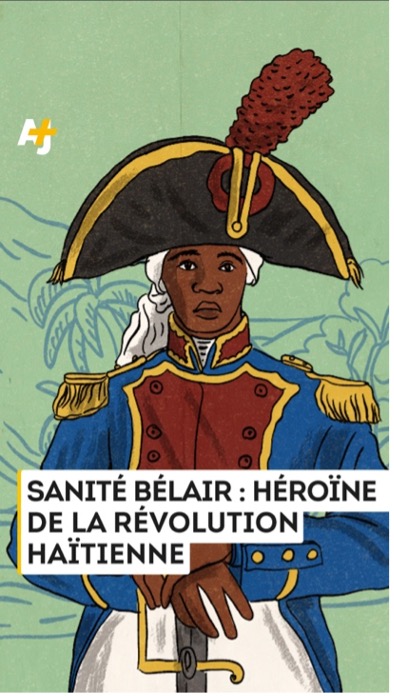
Given that Black History Month (BHM) was coming in February 2023, we thought that it was the perfect time to allow our audience to discover Black figures that are not well-known in the world despite the very significant role they played in recent history. The characters we chose had a huge impact on modern society but they were either forgotten or not given the place they deserved in history. Our goal was to educate our viewers in order to give them a taste of the incredible cultural richness of Black history and how it had a global influence. We chose four unique and inspiring characters:
In France, most of the time, news outlets publish portraits of Black figures from the USA (Martin Luther King, Angela Davis, Rosa Parks, Malcolm X…). But they very rarely help us discover the history of Black activists from the French-speaking world, even if this region also had many artists, philosophers and activists who took part in the de-colonialization and civil rights movements.
That’s why we chose to focus on figures from these regions that were ruled by France during the colonial era. We started researching a list of potential characters and then discussed amongst our teams the characters whose stories we would tell.
Our main criterion was to pick characters who are still relevant today. It was important for us to equally represent men and women figures whose stories would allow us to better understand current-day struggles. The characters we chose follow:
Frantz Fanon is an author who remains hugely important in post-colonial studies. His name is often written on banners during antiracist protest such as during Black Lives Matter rallies.
Paulette Nardal is high-profile figure whose name is frequently mentioned as a model by Afro-feminists, some female activists are demanding that she receives a national honor in the French Pantheon.
Samori Toure is described as a hero by members of the Pan-African movement who seek to build a stronger African continent without foreign influence.
Sanité Bélaire inspired generations of activists in Haiti for her courage and for capacity to reject gender norms in a patriarcal society.
Our characters all lived in the 19th and 20th centuries. Their stories do not come from a single country; their journeys take us between Africa, the Caribbean and Europe in order to show their universality and the diversity and richness of Black history.
Our strategy included publishing our portraits once a week, on the same day and time and with similar graphical treatment. We decided to produce short videos (less than 2 minutes) in order to keep our audience focused and to make the content suitable for younger online audiences.
In order to highlight how exceptional these characters have been in the world, we worked with the creative team to draw several portraits of them performing specific actions. The goal was simple: to give a visual representation of who these people were. We provided our illustrators detailed instruction to make sure the clothes, colors, the buildings, weapons, and landscape were as close as possible to the the way they had been at the time the characters were alive. We sent our graphic artists historical documents, archives and pictures to make sure the drawing look like what happened in history. We had to make sure the pictures we used were from the right location and the right time in history.
To write our scripts, we thoroughly researched in order to better understand our characters and their accomplishments in depth. Finding reliable sources was challenging and took quite some time.
We read articles from scholars, watched content produced by NGOs, visited the websites of libraries, listened to interviews given by experts and checked encyclopedias and just like historians, we also read articles from newspapers dating back to the end of the XIXth century.
We struggled to find visual content for some of the portraits because they lived a very long time ago and cameras were not common. To tackle this issue, we used archive content from the same period, drawings and paintings. As an example, we bought some content from INA, the French audiovisual archive center, and got soundbites from one of our characters recorded in the 30’s.
On the editorial side, we chose our words carefully, for instance, we refused to write the “slave”, but instead the term “put into slavery” to insist on the fact that this system was the result of a political decision.
The results met all the objectives of our team. All the stories were delivered on time and had a huge impact online.
In total, the 4 portraits gathered an audience of 1.5 millions views on all our platforms (Facebook, Twitter, Instagram, TikTok, YouTube).
These series helped our audience discover unknown segments of history and we provided a platform holding true to one our core editorial values at Al Jazeera, of giving a “voice to the voiceless."
Several of our stories were translated on AJ+ English and AJ+ Spanish, our sister channels :
https://www.instagram.com/p/CpYFOZJOjMk/
https://www.tiktok.com/@ajplus/video/7205613330386390318
Given the interaction and the reaction of our audiences, we consider that these videos are a success. We received many comments saying “thank you” and that we helped our audience discover new segments of history.
Our stories were shared by politicians, scholars and activists online. A journalist from Haiti also thanked us for using our thoughtful, balanced editorial approach.



